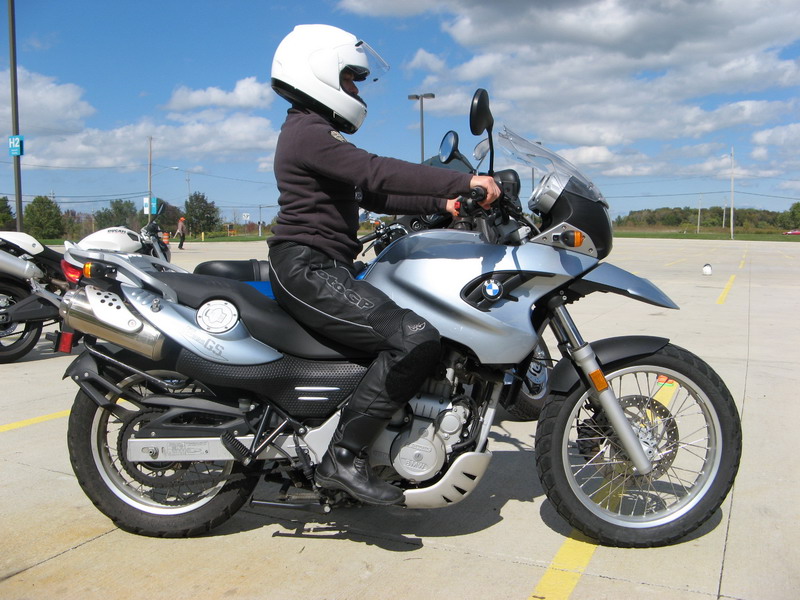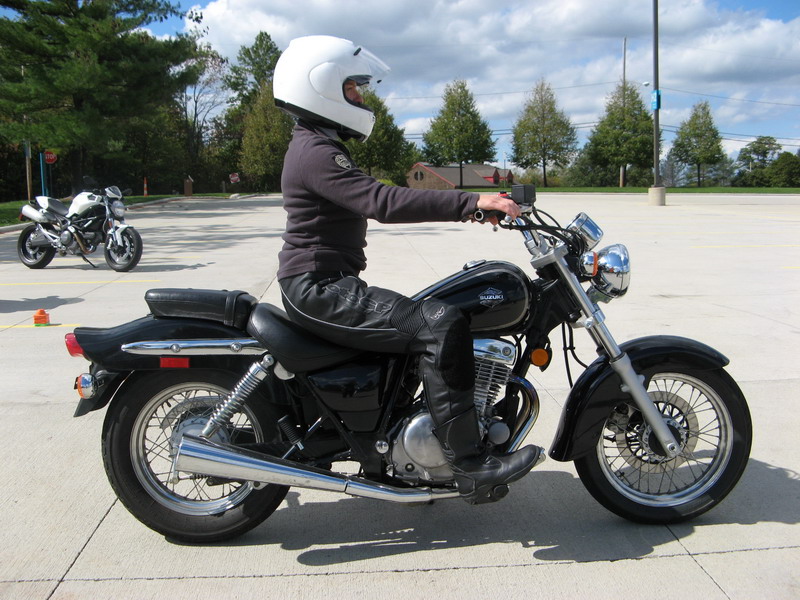To ride a motorcycle, youre going to have to do some posturing. Riding postures are dictated by two main factors—the design of your bike and the build of your body—both of which can be modified, but only to a point. Sit on as many bikes as possible to find the right combination to fit your needs. Youll find there are countless models to choose from, but there are really only three basic riding postures: standard, sport and cruiser.
Standard Riding Posture
This posture is called “standard” for a reason. Of the three riding postures, the standard position is the most neutral. The rider isnt angled forward or slung back in any way. The body is upright. Head and eyes are up, looking through the path of travel. For the hands to rest comfortably on the grips, the arms must be extended, but not hyperextended. There should be enough slack for elbows to remain relaxed and slightly bent. You should be able to “flap your wings” in this position. Knees should rest against the tank and be bent at a height that is slightly lower than the hips. The riders feet should rest on the footpegs at a 90-degree angle, positioned almost directly below the knees.
Because the rider sits up straight and high, this position allows for increased visibility. This generally means a higher seat height, which might cause problems for riders (like me!) who have short legs and may have trouble putting both feet on the ground. Due to the upright body position, there may also be increased wind resistance. From the standard riding posture, riders can easily stand up on the pegs to surmount an obstacle. The standard position can also be sustained for long road trips or short commutes. In general, standard posture provides excellent access to all controls and is often preferred in most new rider courses.

Many models employ standard riding posture, but a few examples are the BMW F 650 GS, Harley-Davidson Sportster, Buell Blast and Honda Nighthawk.
Sport Riding Posture
Sport riding demands a forward lean. The riders head is angled in front of the body, with the head and eyes looking through the path of travel. The upper body is angled in front of the hips. The stomach rests against the tank, while the back muscles and legs support the weight of the upper torso. The arms are relaxed and elbows bent. Knees are also bent and held against the tank, with feet resting on the footpegs in a position behind the knees.
Sport posture is an aerodynamically superior position resulting in the least amount of wind resistance for the rider. Riding performance, particularly in curves, may be enhanced. Without height, the ability to see far down the road is reduced, and the riding position is often cramped, which may be difficult to sustain for more than a couple of hours.

There are many popular sportbikes that employ the sport riding position, including the Ducati Monster, Yamaha YZF-R6, Kawasaki Ninja and Suzuki GSXR.
Cruiser Riding Posture
Cruisers are slung low and back, giving the rider a relaxed look. The riders body is slightly reclined, almost leaning back toward the rear of the motorcycle. As with all riding positions, the head and eyes are looking forward through the path of travel. Arms are more extended in this position than in others, but the elbows should still be bent. Due to the degree of the bodys backward lean, some riders overextend to reach the handgrips, which may cause fatigue, shoulder pain and muscle stiffness. The knees should be bent and rest against the tank at almost the same height as the hips, and the feet should rest on the footpegs forward of the knees.
Cruising posture is popular, and understandably so, as the laid-back riding position allows greater extension of the legs. When cruising, the leg position can even be varied with the addition of accessory footpegs. With forward controls, however, the rider will find it difficult to stand on the pegs to cross an obstacle without pulling weight onto the handgrips. Lower seat heights, often found with this posture, provide comfortable flat footing.

Harley-Davidsons cruisers are mostly from the Dyna, Softail and Touring families. Other cruisers include the Yamaha V Star, Honda Shadow and Suzuki Boulevard.
Susan Rzepka Orion is a certified MSF RiderCoach and Riders Edge Instructor who loves to ride, write and help others who want to do the same. You can find her on the road on her BMW F 650 GS.
Related Articles
Riding Right: What to Consider When Buying Your First Motorcycle
Riding Right: You Passed! Now What?
Riding Right: You Flunked! Now What?

I have been riding Ducati Monsters for 16 years and would classify them as standards. I am 5 feet 5 inches and only have a slight forward lean as I sit on my Monster 1100 EVO. A sport position to me is the position you would have on a sportbike like a Suzuki GXS-R or a Ducati Panigale, with clip-on bars and much more forward lean.I am 68 years old and find the more erect position on the Monster more appropriate for my arthritic neck and bad back. It also takes some of the weight off my back and puts it on my arms, making it more comfortable over long distances than the upright cruiser position. I often do several thousand mile tours on my Monster.
I prefer the standard posture. I could ride more than 500 miles a day easy. Just depends what type riding you want to do, or have to do sometimes.
Very informative.
Well written descriptions.The comment for the sports bike position – “the riding position is often cramped, which may be difficult to sustain for more than a couple of hours.” In the picture the rider is dropping her stomach into the tank, the back should be straight as in the other position, not sagged. In the correct position the rider should have no trouble at all riding long distances, standing on the pegs, also gives you a break.
Great article. It only took two bikes and $24k to come to the conclusion that the standard riding posture worked best. If only I had just read this article first…
Very helpful article.
I wish I would have read this article before I got the bike I own now.
Hummm…what happened to sport-touring? Different ride, different seating position.
Love this one. Very helpful for me as I am dreaming of the right bike for little ones like me.
Great article. I am getting my first bike, now I have an idea of a better fit for my body type.
Great newbie article. Detailed enough.
Thanks very much.
Hey, has that F 650 GS been lowered? It looks like it was.
Excellent article. I have a Cruiser, a Softail Classic with floorboards that allow me to shift my feet a bit on longer rides for less leg fatigue. I also had the handlebars adjusted back towards me for a more relaxed arm and hand position. Keep bringing us this kind of great information.